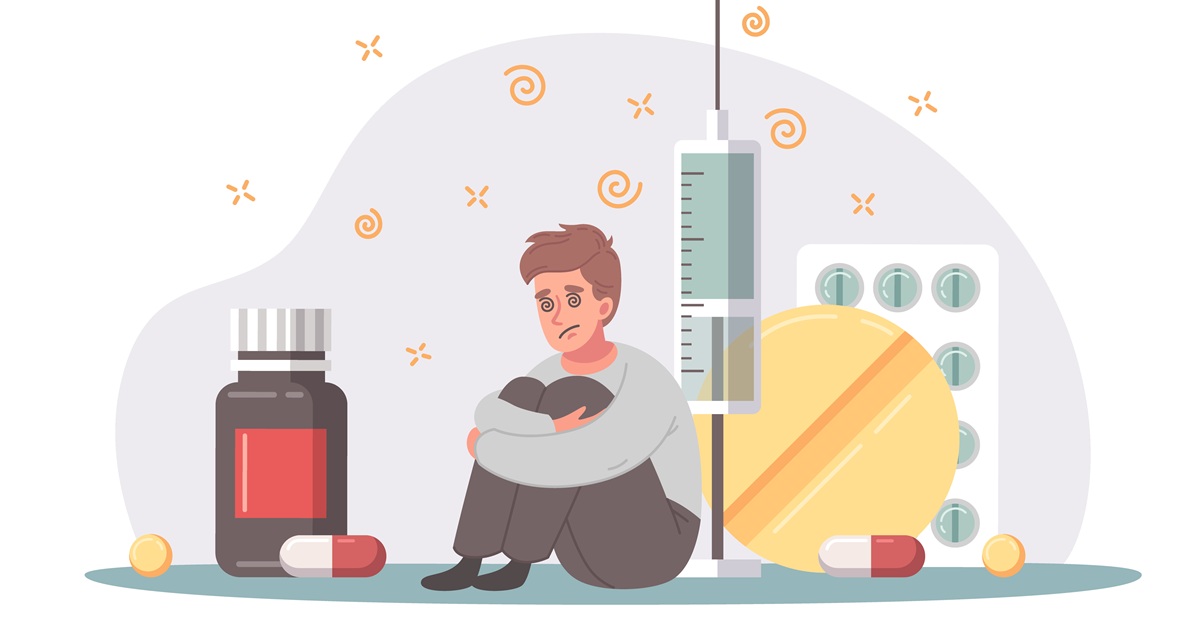
Semaglutide Side Effects: A Complete Guide for Patients and Families
Semaglutide, available under well-known brand names like Ozempic, Wegovy, and Rybelsus, is transforming how we manage weight and diabetes. As a GLP-1 receptor agonist, semaglutide helps regulate blood sugar and aids significant weight loss. However, like any medication, it’s essential to understand Semaglutide side effects for safe and effective use.
Popular Semaglutide-Based Medications
Ozempic (Semaglutide Injection)
FDA-approved for type 2 diabetes, Ozempic is often used off-label for weight loss. The side effects of Ozempic are similar to other semaglutide formulations.
Wegovy (Semaglutide Injection)
Specifically approved for chronic weight management in adults with obesity, Wegovy’s side effects may be more pronounced due to its higher dose compared to other semaglutide medications.
Rybelsus (Oral Semaglutide)
Rybelsus is the first oral GLP-1 receptor agonist, offering an alternative for those who prefer oral medication. Its side effects resemble those of injectable forms, particularly gastrointestinal symptoms.
Other Related Medications
Medications like Mounjaro (tirzepatide) and Zepbound, although not semaglutide-based, work similarly as GLP-1 agonists and share similar side effect profiles.
Understanding Semaglutide’s Action and Why Side Effects Occur
Semaglutide mimics the action of glucagon-like peptide-1 (GLP-1), a hormone produced in the intestines. This explains why many Semaglutide side effects primarily affect the digestive system. Here’s how semaglutide works:
-
Slows gastric emptying, promoting feelings of fullness
-
Reduces appetite by interacting with the central nervous system
-
Enhances insulin sensitivity and glucose regulation
-
Modulates gut hormone release
These effects are beneficial, but they can also lead to uncomfortable symptoms, especially during the initial phases of treatment or when adjusting dosages.
Common Semaglutide Side Effects
Gastrointestinal Symptoms
Nausea and Vomiting
The most common side effects of semaglutide involve nausea, especially during the first few weeks. Vomiting can also occur, particularly with rapid dose increases or after consuming large meals. Both Ozempic and Wegovy may lead to these symptoms.
Altered Bowel Habits
Patients may experience either diarrhea or constipation, as the slowed gastric emptying can result in constipation, while changes in gut hormones may cause diarrhea.
Abdominal Discomfort
Bloating, cramping, and general abdominal discomfort are often reported, correlating with semaglutide’s effect on digestion.
Gastroesophageal Reflux Disease (GERD)
Some patients develop new or worsening acid reflux symptoms, which occur due to delayed gastric emptying and changes in stomach acid production.
Systemic Side Effects
Fatigue
Temporary fatigue is common, especially when starting treatment, and generally resolves within 2-4 weeks.
Headaches
Mild to moderate headaches can occur, often linked to blood sugar changes or dehydration.
Appetite Changes
Though appetite suppression is desired, some patients find it to be more dramatic than expected, leading to early concerns.
Serious Semaglutide Side Effects That Require Medical Attention
While rare, some Semaglutide side effects require immediate attention:
Pancreatitis
Acute pancreatitis is a rare but serious risk. Symptoms include:
-
Severe, persistent abdominal pain
-
Pain radiating to the back
-
Nausea and vomiting that doesn’t improve
-
Fever
Gallbladder Issues
Rapid weight loss can increase the risk of gallstones. Watch for:
-
Severe upper abdominal pain
-
Pain radiating to the shoulder blade
-
Nausea and vomiting
-
Jaundice
Thyroid Concerns
Although primarily observed in animal studies, thyroid monitoring is recommended. Watch for:
-
Neck lumps or swelling
-
Difficulty swallowing
-
Persistent hoarseness
-
Rapid heartbeat
Severe Hypoglycemia
In patients taking other diabetes medications, low blood sugar (hypoglycemia) can occur. Symptoms include:
-
Excessive sweating
-
Trembling
-
Confusion
-
Rapid heartbeat
Evidence-Based Management of Semaglutide Side Effects
1. Dose Optimization
Studies suggest that gradually increasing the dose reduces side effects. The general approach is:
-
Start with the lowest effective dose
-
Increase the dose slowly every 4 weeks
-
Monitor patient response and adjust accordingly
2. Dietary Modifications
Certain dietary changes can help manage Semaglutide side effects:
-
Meal Composition:
Focus on lean proteins (25-30% of calories), high-fiber foods, and limit high-fat or fried foods. -
Meal Timing:
Eat smaller, more frequent meals, avoid eating too close to bedtime, and allow time between meals. -
Hydration and Electrolyte Balance:
Drink 8-10 glasses of water daily, include electrolyte-rich beverages, and monitor urine color as an indicator of hydration.
When to Contact Your Healthcare Provider
Seek immediate medical attention for:
-
Severe, persistent abdominal pain
-
Vomiting that prevents fluid intake
-
Dehydration
-
Unusual neck swelling or difficulty swallowing
-
Symptoms of severe hypoglycemia
Schedule a follow-up if you experience:
-
Mild to moderate nausea lasting more than two weeks
-
Constipation that doesn’t improve with dietary changes
-
Concerns about medication effectiveness
-
Questions about dose adjustments
Long-Term Considerations and Management
Medication Tolerance
Most patients develop tolerance to semaglutide side effects within 4-8 weeks. However, some may require:
-
Dose adjustments
-
Temporary treatment breaks
-
Alternative medication options
Ongoing Monitoring
Regular check-ins with your healthcare provider are essential, focusing on:
-
Weight and blood pressure monitoring
-
Blood glucose tracking
-
Kidney function assessments
-
Thyroid function evaluations
Expert Recommendations for the Best Results
To optimize your treatment with semaglutide, experts recommend:
-
Start Low, Go Slow: Gradual dose escalation reduces side effect risks.
-
Maintain Regular Communication: Report concerns promptly to your healthcare provider.
-
Integrate Healthy Lifestyle Habits: Combine medication with a balanced diet and exercise.
-
Monitor for Warning Signs: Know when to seek medical attention.
-
Stay Consistent: Ensure regular medication schedules for the best results.
Conclusion: Mastering Semaglutide Side Effects for Better Health
Understanding Semaglutide side effects is key to making informed decisions about your treatment. While side effects can be uncomfortable, most are manageable with appropriate strategies and guidance from your healthcare provider. Open communication and evidence-based management approaches are crucial to achieving safe, effective treatment outcomes with Ozempic, Wegovy, Rybelsus, and other GLP-1 agonist medications.
Remember, individual responses to semaglutide vary. Partnering closely with your healthcare team ensures the safest, most effective treatment plan tailored just for you.
Useful Resources
Official Medical Resources
- FDA Drug Information: Official prescribing information for Ozempic, Wegovy, and Rybelsus
- American Diabetes Association: Comprehensive diabetes management guidelines
- Obesity Medicine Association: Professional resources for weight management
Patient Education Materials
- Diabetes.org: Patient-friendly information about GLP-1 agonist side effects
- CDC Diabetes Prevention Program: Lifestyle modification resources
- Academy of Nutrition and Dietetics: Evidence-based nutrition guidance
Emergency Resources
- Poison Control: 1-800-222-1222 for medication-related emergencies
- American Association of Poison Control Centers: 24/7 emergency guidance
- Local Emergency Services: 911 for severe side effects requiring immediate attention
Professional Organizations
- American College of Physicians: Clinical practice guidelines
- Endocrine Society: Hormone and metabolism expertise
- American Board of Family Medicine: Family medicine resources
Mobile Apps and Tools
- MyFitnessPal: Nutrition tracking to support medication effectiveness
- Glucose monitoring apps: For patients with diabetes
- Medication reminder apps: To maintain consistent dosing schedules
Clinical Trial Information
- ClinicalTrials.gov: Current research on semaglutide and GLP-1 agonists
- National Institute of Health: Research updates and findings
Note: Always consult with your healthcare provider before using any resources or making treatment decisions based on online information.
Medical Disclaimer: This article is for educational purposes only and does not replace professional medical advice. Always consult with your healthcare provider before starting, stopping, or modifying any medication regimen. Individual experiences with semaglutide side effects may vary, and professional medical guidance is essential for safe treatment.
About the Author: This article was developed by board-certified family medicine physician doctor Hina Zaman with extensive experience in obesity medicine and GLP-1 receptor agonist therapy. Our practice emphasizes evidence-based medicine and patient-centered care.



